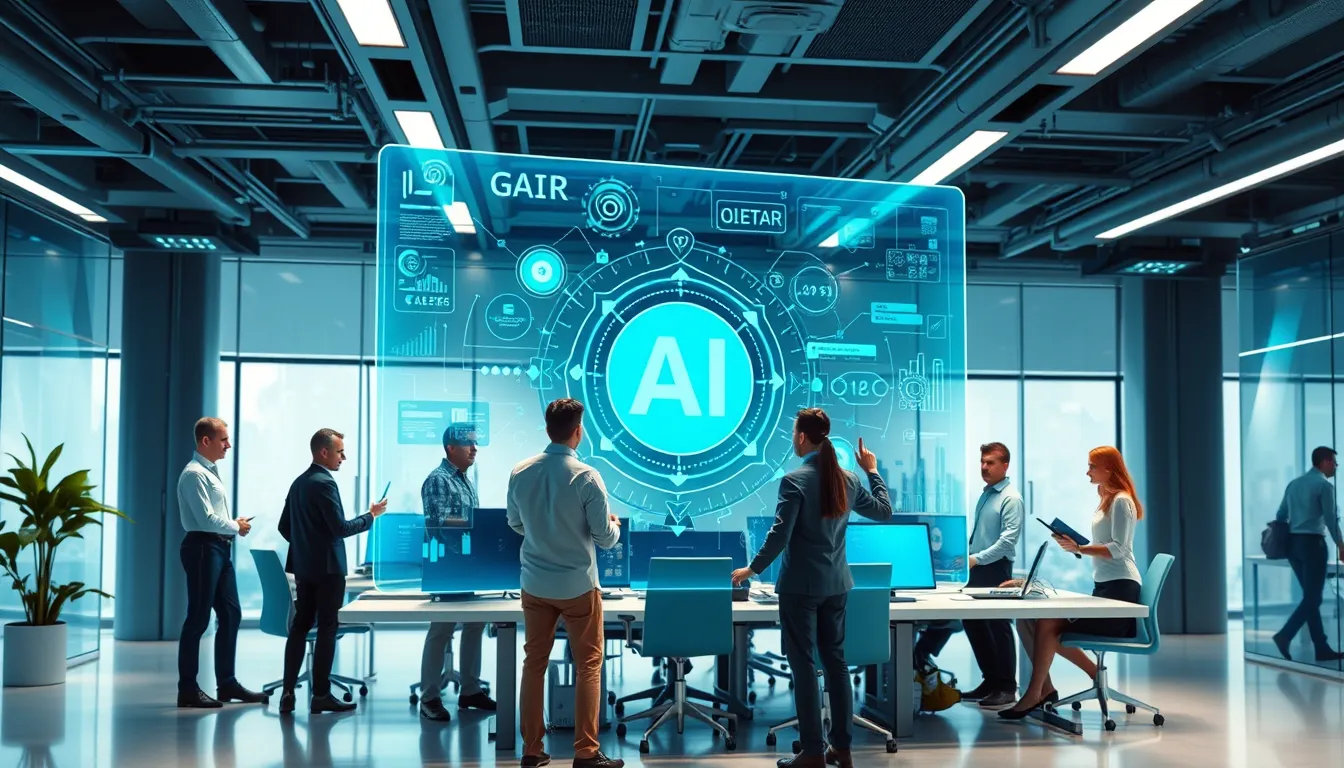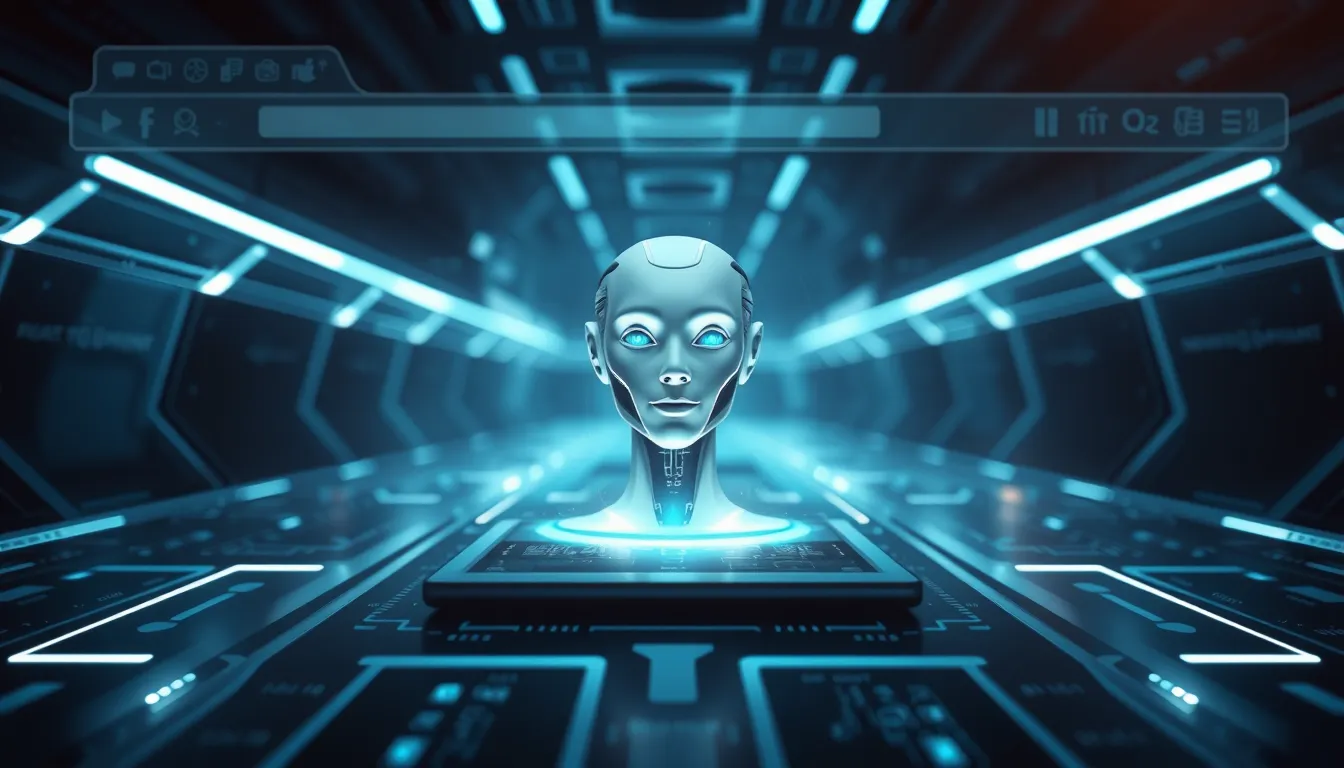Now Reading: AI in Filmmaking: Revolutionizing with Respeecher AI
-
01
AI in Filmmaking: Revolutionizing with Respeecher AI
AI in Filmmaking: Revolutionizing with Respeecher AI

AI in Filmmaking: Revolutionizing with Respeecher AI
The infusion of Artificial Intelligence (AI) in filmmaking is fundamentally transforming how films are produced and experienced, ushering in a new era where creativity, precision, and efficiency converge. Modern production teams and visionary directors are embracing tools like Respeecher AI to refine accents, enhance voice recreations, and even influence innovative architectural designs on screen. This technology is revolutionizing storytelling by bridging the gap between traditional cinematic methods and emerging digital capabilities, ultimately enhancing the authenticity and impact of modern films.
Introduction: A New Era in Cinematic Storytelling
In recent years, the film industry has witnessed a dramatic shift fueled by technological advancements that reshape every aspect of movie production. At the forefront of this transformation is the strategic use of AI, which is not merely a tool for automation but a sophisticated medium enabling creative storytelling. With AI-driven solutions like Respeecher AI, filmmakers can now overcome longstanding challenges related to voice authenticity and character portrayal. By fine-tuning accents and replicating the unique vocal characteristics of iconic performers, Respeecher AI offers an innovative approach that upholds the artistic integrity of films while harnessing the efficiency and precision of modern technology.
Traditionally, filmmakers have struggled with acquiring authentic voice portrayals, especially when working with foreign accents or historical dialects. Respeecher AI steps in as a game changer, providing solutions that enhance the natural rhythm, tone, and authenticity of dialogue. In doing so, it not only saves time during production but also introduces a higher level of detail that enriches the overall cinematic experience. This transformative approach is helping storytellers connect with audiences in a deeper, more genuine way, ensuring that every line spoken on screen resonates with precision and believability.
Respeecher AI: Enhancing Filmmaking Authenticity
Respeecher AI has emerged as a pivotal tool in modern filmmaking by offering several critical enhancements. These innovations are reshaping the way filmmakers approach voice and dialogue production, contributing substantially to the industry’s creative arsenal. Here are some of the key contributions of Respeecher AI:
- Refining challenging accents: One of the standout features of Respeecher AI is its ability to refine difficult language elements. For instance, it has been effectively used to perfect Hungarian accents for characters, ensuring that the linguistic nuances match the cultural context of the narrative.
- Time-saving voice recreations: When actors’ voices require enhancement or precise modulation similar to iconic film characters, Respeecher AI proves invaluable. It streamlines the post-production process by accurately recreating voices, thereby reducing redundancy and speeding up the production pipeline.
- Creative contributions to architectural design: Beyond voice work, Respeecher AI has been implicated in the creative realm of cinematic design. Its algorithms can simulate the acoustic properties of various architectural settings, providing directors with ambient soundscapes that enhance the authenticity of key scenes.
This multi-dimensional approach not only improves the technical aspects of filmmaking but also elevates the viewer’s experience by delivering performances that are both credible and emotionally engaging. By integrating AI into the heart of the production process, filmmakers can achieve a delicate balance between artistic expression and technical innovation.
Using Respeecher to Refine Hungarian Accents
A striking example of Respeecher AI’s real-world impact is evident in Brady Corbet’s visually compelling film, ‘The Brutalist’. Set against the evocative backdrop of the post-World War II era, this film required a precise replication of Hungarian accents to capture the historical and cultural authenticity of the characters. Actors Adrien Brody and Felicity Jones both benefited from the detailed enhancements provided by Respeecher AI, which meticulously refined their vocal performances to mirror the subtleties of Hungarian speech.
In ‘The Brutalist’, the use of Respeecher AI was not merely a technical fix; it was a narrative asset that enriched the film’s storytelling. The refined accents contributed to a stronger sense of place and time, grounding the film in its specific cultural and historical context. By enabling actors to deliver nuanced performances with an authentic accent, the technology facilitated a more immersive viewing experience. This synthesis of traditional acting methods with advanced AI applications exemplifies how modern tools can elevate classic film narratives by preserving their intrinsic value while introducing state-of-the-art enhancements.
Furthermore, the application of Respeecher AI in this context underscores the potential of AI in addressing one of the longstanding challenges in filmmaking: capturing the true essence of a character’s background. By aligning voice modulation technologies with artistic requirements, Respeecher AI supports a cinematic vision where authenticity is paramount, and each dialogue exchange carries the weight of genuine cultural expression.
AI’s Multifaceted Role in Storytelling
While the enhancements in voice and accent refinement are among the most celebrated contributions of AI in filmmaking, the technology’s role extends far beyond these applications. AI is increasingly becoming integral in several key areas of film production, playing a multifaceted role that supports both artistic vision and practical production needs. Some of the prominent roles include:
- Authentic character portrayal: Through advanced data analysis and voice synthesis, AI systems help create more believable and relatable characters. This ensures that audiences connect with the narrative at an emotional level, experiencing the story as if they were part of it.
- Innovative cinematic design: AI algorithms assist in generating conceptual art and assist in designing immersive backgrounds and sets. By leveraging computational models, filmmakers can simulate complex visual effects and design elements that were once expensive or time-consuming to create manually.
- Streamlined production processes: From script analysis to post-production editing, AI in filmmaking optimizes numerous facets of the production process. It enables directors and producers to focus more on the creative aspects by automating routine and repetitive tasks, thereby reducing overall production time and costs.
The application of AI in these areas facilitates an environment where creativity is not stifled by technical limitations. Instead, production teams are empowered to explore innovative narratives and cinematic techniques. This paradigm shift is redefining the creative boundaries of cinema, allowing filmmakers to push the envelope and craft stories that are both technologically advanced and emotionally resonant.
Moreover, AI’s ability to analyze large volumes of historical data means that it can contribute contextually relevant insights to help shape plots or dialogue. For instance, historical accuracy in period films can be greatly improved by employing AI-driven research tools that provide in-depth background information. Such integrations not only enhance the visual and auditory experience but also contribute scientifically accurate content that enriches the viewer’s understanding of the narrative’s setting.
Balancing Tradition and Innovation
The growing integration of AI in filmmaking naturally invites debates about the balance between technological innovation and traditional artistic expression. While Respeecher AI and similar technologies have garnered acclaim for their ability to deliver precision and authenticity, there is a continuing dialogue regarding the preservation of artistic tradition in cinema.
Directors and actors alike are navigating these evolving dynamics by seeking a harmonious integration where technology serves as an enhancer rather than a replacement for genuine performance. On one hand, AI tools facilitate the recreation of voices and accents, allowing productions to maintain historical and cultural integrity. On the other hand, there is an inherent value in human nuance and spontaneity that no algorithm can fully replicate.
This balance is particularly evident in projects that hinge on the emotional and cultural subtleties of the human voice. In these scenarios, the goal is not to mask the actor’s original performance but to augment it with refined attributes that elevate the narrative. Achieving this equilibrium requires ongoing collaboration between creative professionals and technical experts. Filmmakers must determine the extent to which AI enhancements are applied so that the technology supports, rather than overshadows, the actors’ intrinsic talents.
The journey toward this balance also highlights the evolving role of the filmmaker as both artist and technologist. Directors must now become conversant in AI capabilities and limitations to make informed decisions about its use in production. The collaborative spirit between human creativity and machine precision is redefining the filmmaking process, with each project offering a new set of challenges and opportunities. This dynamic interplay between tradition and innovation sets the stage for future advancements that continue to respect and preserve the nuanced art of storytelling.
Conclusion: A Transformative Future for Cinema
The impact of AI in filmmaking, as championed by groundbreaking tools like Respeecher AI, is profound and far-reaching. By refining accents, enhancing voice recreations, and even contributing to visual design, AI is not just streamlining production methods—it is redefining what is possible in cinematic storytelling. Films such as ‘The Brutalist’ serve as powerful examples of how blending traditional acting techniques with advanced AI technologies can result in richer, more immersive narratives.
As the film industry evolves, the collaboration between human creativity and AI technology continues to open new avenues for artistic expression. The challenge lies in leveraging these tools to enhance the storytelling process without compromising the emotional resonance and authenticity that have always been at the heart of great cinema. By fostering this balance, filmmakers can push the boundaries of narrative art, creating experiences that are both technologically innovative and deeply human.
Looking ahead, the role of AI will undoubtedly expand, providing further opportunities for creativity while addressing technical challenges in filmmaking. As we witness continued advancements, one thing remains clear: the partnership between creative professionals and AI tools like Respeecher AI is set to redefine the cinematic landscape, resulting in films that are more dynamic, authentic, and reflective of a rapidly evolving art form.
In conclusion, AI in filmmaking is transforming the creative process in ways that were once unimaginable. The contributions of Respeecher AI and similar technologies have not only enhanced the technical aspects of film production but have also enriched the art of storytelling. By merging the precision of modern technology with the time-honored traditions of cinema, filmmakers are crafting narratives that resonate on multiple levels, captivating audiences and setting new benchmarks for what movies can achieve. This revolutionary shift ensures that the future of filmmaking remains vibrant, innovative, and deeply connected to the human experience.

























